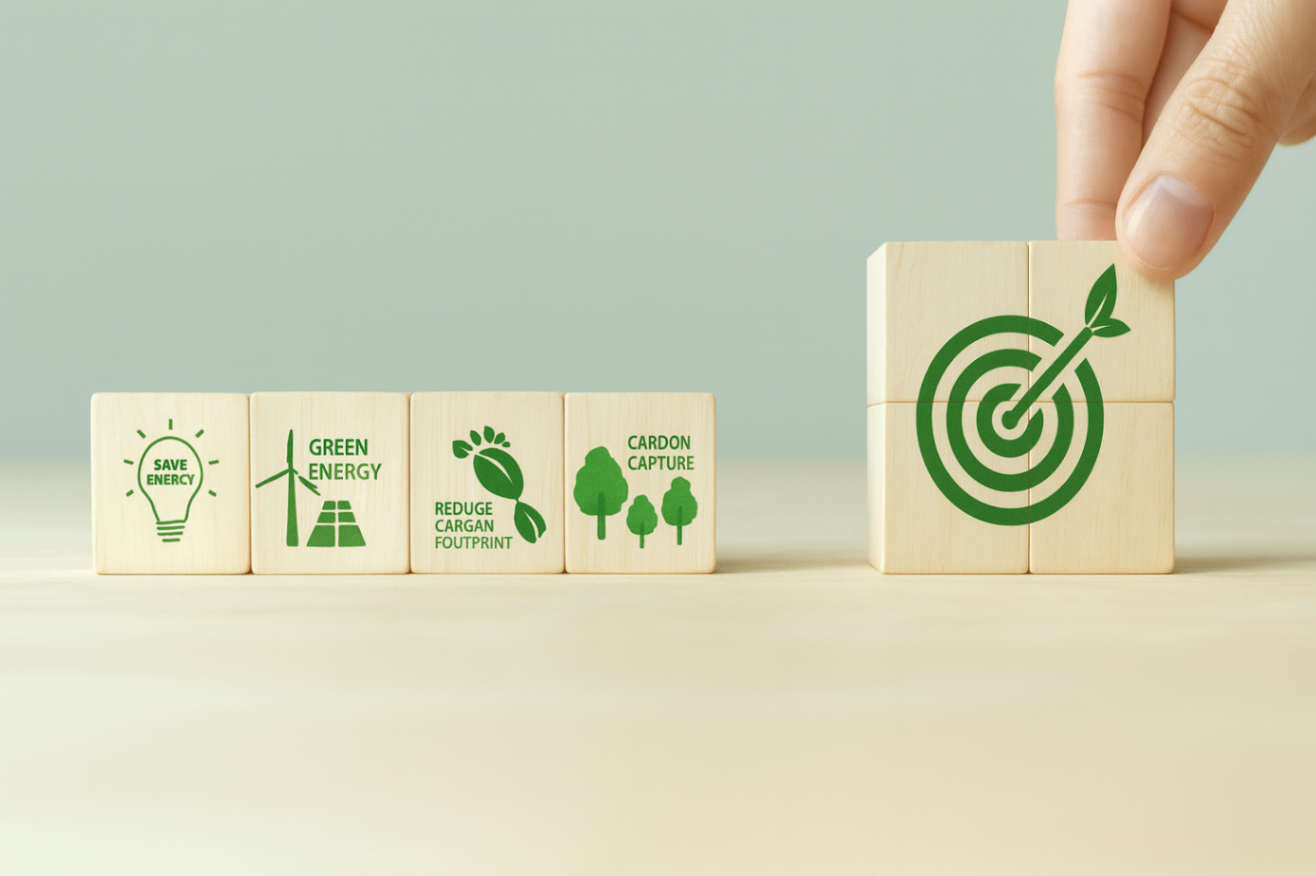Here is the 5-step process:
Measure your emissions
Report your emissions
Set Emission reduction targets
Implement reduction/removal strategies
Track your Progress
Step 1: Measure your emissions – also known as GHG Emissions accounting
GHG emission accounting is the process of measuring how much greenhouse gas emissions your company generates. It is expressed in carbon dioxide equivalent (CO₂e), a unit that standardizes different gases based on how much heat they trap in the atmosphere (their Global Warming Potential or GWP). In order to do GHG emission accounting, you need to do the following:
What to measure?
Which protocol to follow for measurement?
How to get started?
Let's deep dive into each of these:
Before collecting data, define the scope, i.e., what parts of your business and which types of emissions you’ll include. This is called setting the emission boundaries. Following are the two types of emission boundaries:
Operational control: Include everything your company has control over, even if you don’t own it.
Financial control: Include everything your company owns or has a majority stake in (50%).
While the GHG Protocol recommends Operational Control as it more accurately reflects a company’s direct environmental impact and ensures consistent emissions reporting, it is best to start with what you can access and where you can get reliable data.
Emissions are grouped into:
Scope 1: Direct emissions (e.g., company vehicles, onsite fuel)
Scope 2: Indirect emissions from energy use (e.g., electricity)
Scope 3: Indirect emissions across your value chain (e.g., suppliers, employee travel)
Most companies start with Scope 1 and 2 and then add key Scope 3 categories over time.
For example, if you run a restaurant, the emissions would be from following:
Scope 1: Gas burned in kitchens
Scope 2: Electricity used in outlets
Scope 3: Emissions from producing food, delivery vehicles, and customer waste
So, now you know what to measure.
A protocol is a defined set of rules that ensures your emissions are calculated in a way that is consistent, accurate, and comparable across companies. The most widely used is the GHG Protocol. It explains how to measure and categorize emissions as Scopes 1, 2, and 3. Some companies also use ISO 14064; a more technical protocol often applied in regulated sectors such as energy or manufacturing. Other common protocols include The Global GHG Accounting & Reporting Standard for the Financial Industry, IPCC Guidelines and so on.
Once boundaries are defined and you select the protocol for measurement, create a simple data plan:
What data is needed (e.g., electricity use, fuel, travel)
Where it comes from (e.g., utility bills, invoices)
Who can provide it (e.g., admin, facilities, procurement, HR)
Start simple: Use what’s available — even estimates are okay early on. A spreadsheet or tracker works well for small teams.
Companies typically:
Use Excel or free GHG Protocol tools to get started
Work with consultants to guide the first inventory
Adopt software such as Microsoft Sustainability Manager, Net Zero Cloud by Salesforce, Watershed, Arbor, Normative, Sphera as data becomes more complex and reporting scales up
Step 2: Reporting Frameworks
A reporting framework helps your company tell the story of your climate impact in a clear and structured way. It’s like a set of questions that guide you on:
What to share — like your emissions, climate risks, or reduction targets
How to share it — in a format that's easy to read and compare
Who to share it with — like investors, regulators, or customers
Common frameworks include CDP, TCFD, GRI, BRSR, CSRD, and the US SEC Climate Rule. Each serves different reporting needs and will be explored in upcoming insights.
Step 3 to Step 5: What Comes Next
Once your emissions are measured and reported, the next step is to set reduction targets, implement the strategies to meet the reduction targets (Breaking down GHG Emissions for business leaders.), and begin emission reduction target tracking progress. In future insights, we’ll deep dive into aspects like how to set targets, different strategies to mitigate your emissions.
